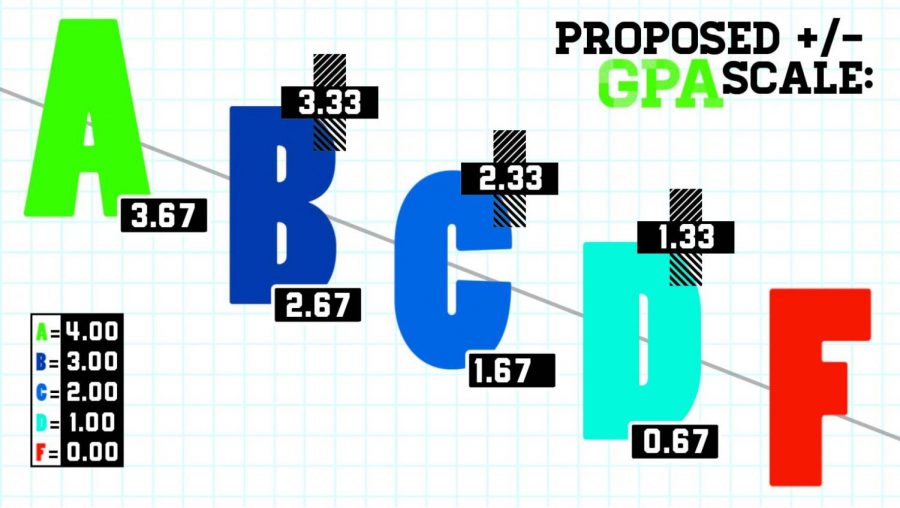Change to grading system could be implemented next school year
Should the policy be approved for the fall 2015 semester, the new grading system will not interfere with previous courses students have taken, and will only affect classes starting that semester.
Next school year, student’s grade point averages could be compiled differently if St. Edward’s University implements a plus/minus grading system.
In 2008, the Faculty Committee began investigating the different grading systems that other universities used, exploring the policy benefits and complications and then presenting the idea of the plus/minus grading policy to the Faculty Senate.
Initially, the Faculty Senate rejected the idea, but after some revision the proposal was voted on again, and passed. However, the grading policy was unable to be implemented until the academic component of St. Edward’s central computer system (Enterprise Resource Program) was completed.
Now with the academic system aligned within the software and the proposal approved by the Faculty Senate, it has been sent to the Academic and Graduate Councils who will consider the final approval of the plus/minus grading policy within the next couple of weeks.
Students were notified of the possibility of changing the grading policy at the first Student Government Association Public Forum in 2012.
“Initially I was nervous. But after having discussions and learning about what the actual policies were, I ended up liking the system a lot more because it really seemed to benefit the student body,” Student Government Association Chief of Staff Michael Cimino said.
Should the policy be approved for the fall 2015 semester, the new grading system will not interfere with previous courses students have taken, and will only affect classes starting that semester.
One concern regarding the new policy is grade point average. Students need a minimum GPA of 2.0 to maintain scholarships and avoid academic probation. With a plus/minus grading system, however, a numerical grade of 70-79 would no longer count solely as a 2.0, but be divided into three categories: a C- worth 1.7, a C worth 2.0 and a C+ worth 2.3.
Currently, graduate schools are concerned that grades are inaccurate due to a single letter grade representing such a large range of numerical grades. Therefore, some programs may discount the GPA’s students have.
“If someone gets an 89 in a class, they shouldn’t get lumped together with a student who barely scraped by with an 80. That is a distinction worth noting,” SGA Sen. Michael Haywood said.
From a faculty member’s perspective, it benefits them in terms of their marking system and deliberation over a grade.
“It’s a good way to reward students for their quality of work and avoid grade inflation. Also, I won’t have to ponder and review a student’s work when deciding whether or not to give a particular letter grade,” assistant professor of history Daniel Glenn said.
In regards to professor’s forms of grading, they do not have to adhere to the grading scale being proposed and faculty members can still choose to give whole grades.
“Even though we have a full spectrum of grades, most of our students are great students and do good work. As a result, most of the grades are comprised at the top, so when you only have two choices to give, an A or a B, it is really hard to give meaningful feedback in terms of finer distinctions and quality of work,” professor of psychology and President of the Faculty Senate Russell Frohardt said.
If the plus/minus system is approved, St. Edward’s will be up to par with the standard grading policy that many other universities in Texas adhere to.
Should students have any comments or concerns regarding the plus/minus grading policy, you are encouraged to attend the SGA Public Forum on Oct. 20, beginning at 7:00 p.m. in Mabee Ballroom.
Follow Amanda on Twitter for more!







